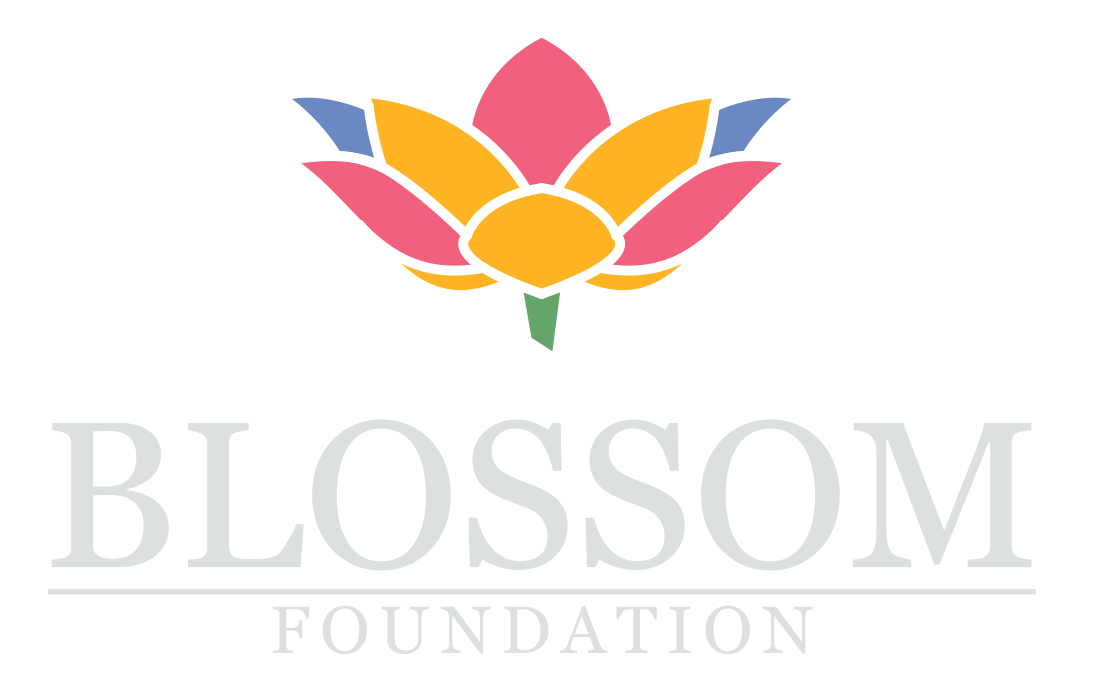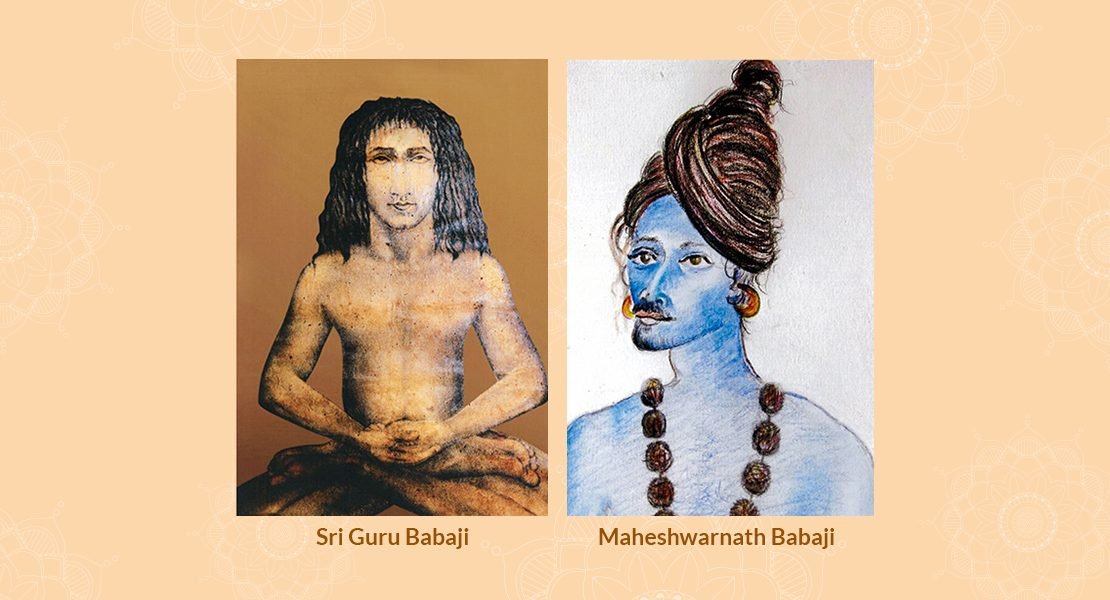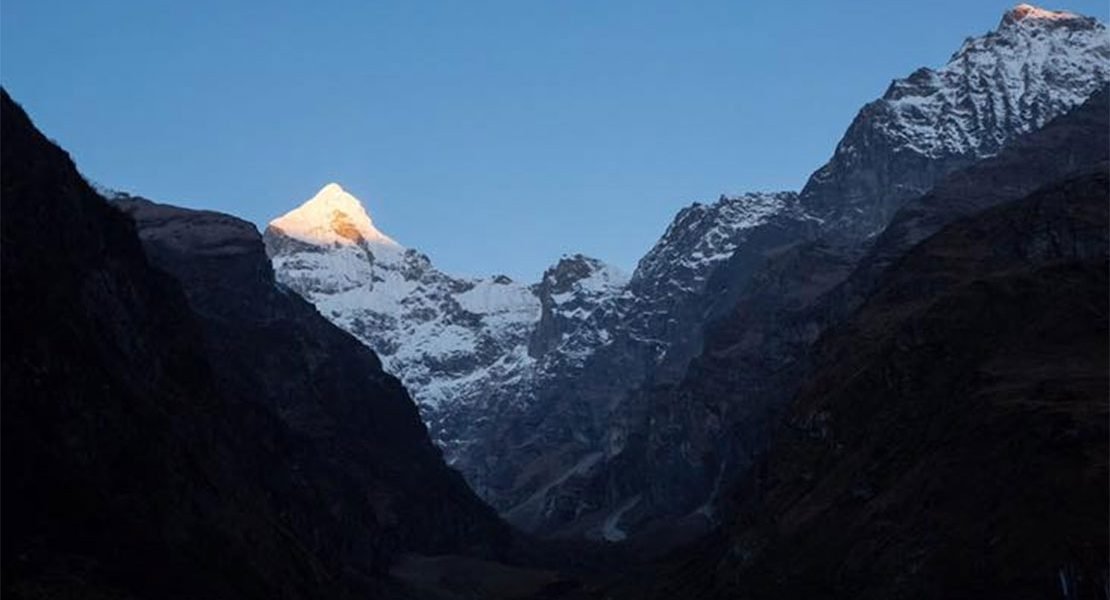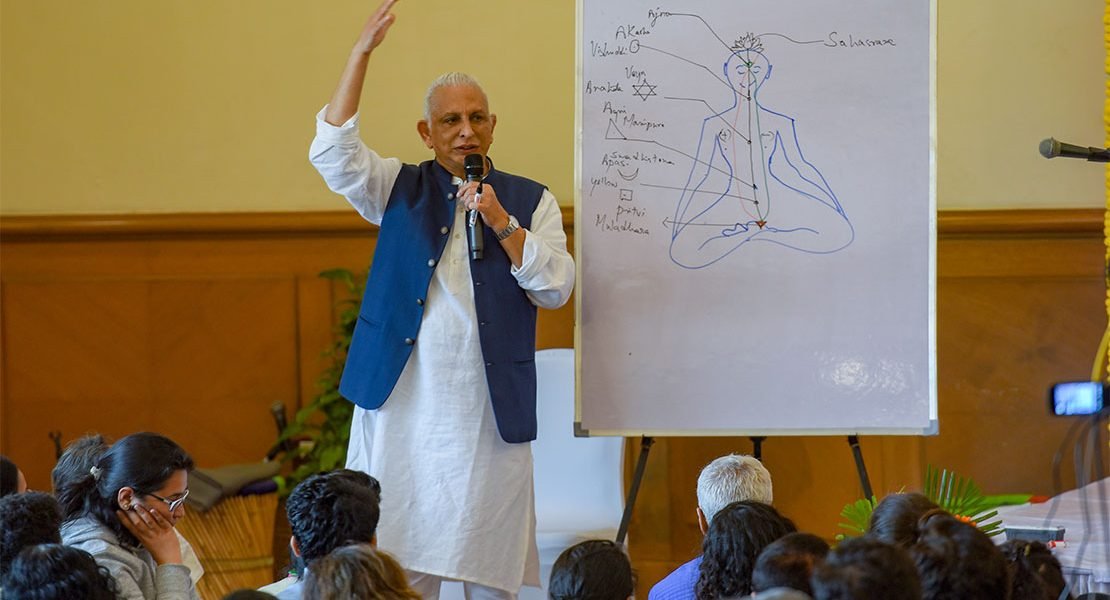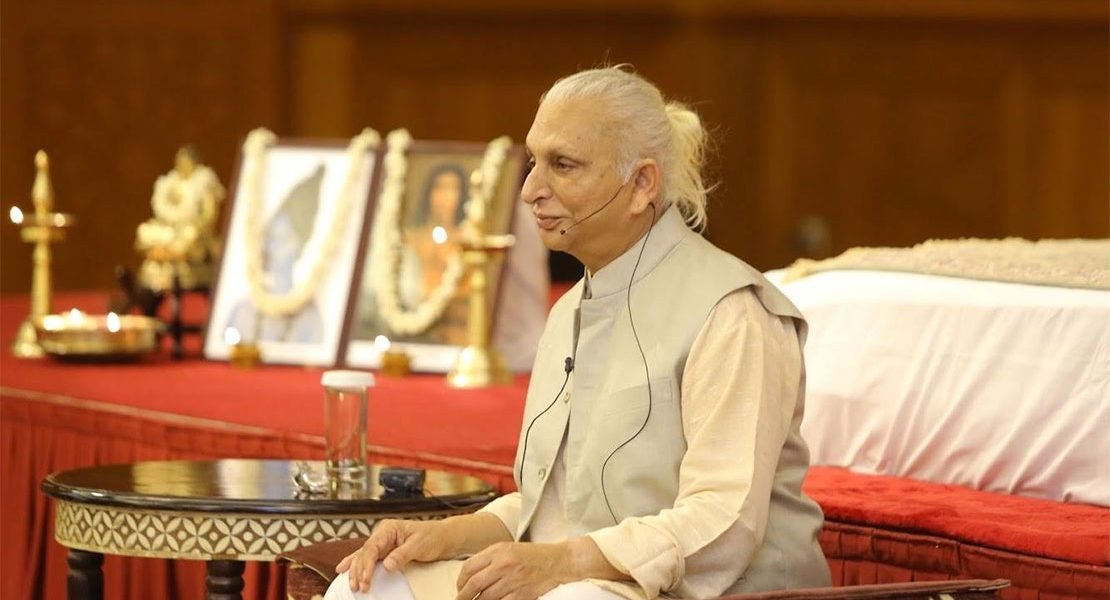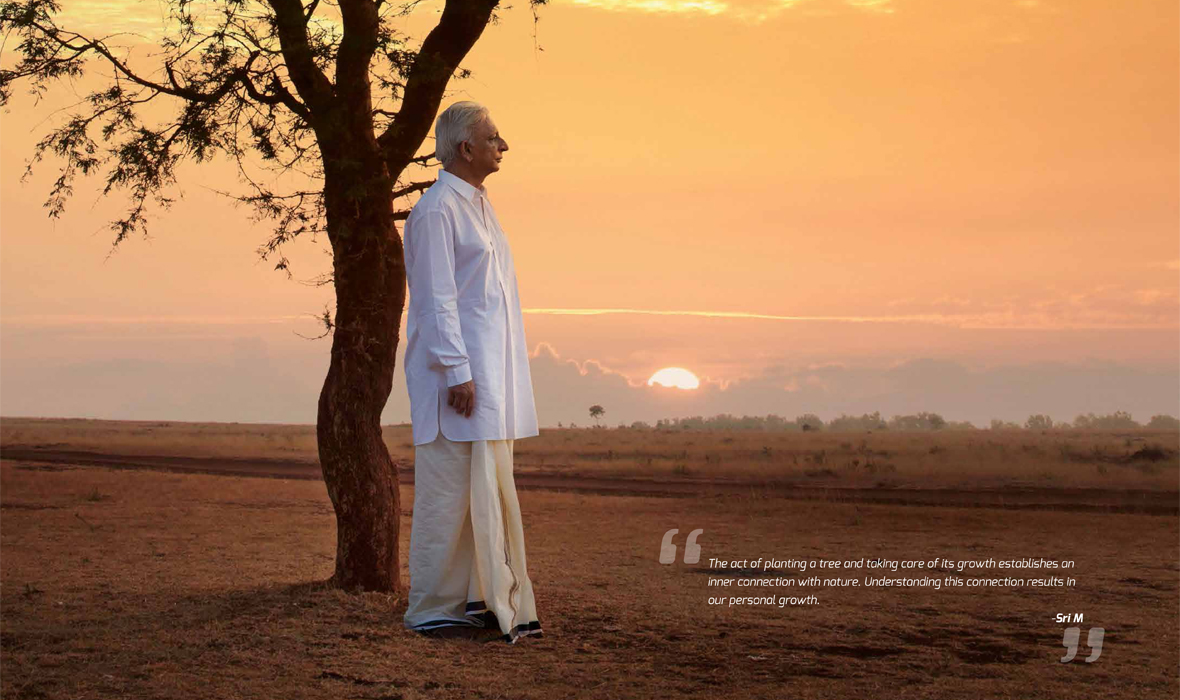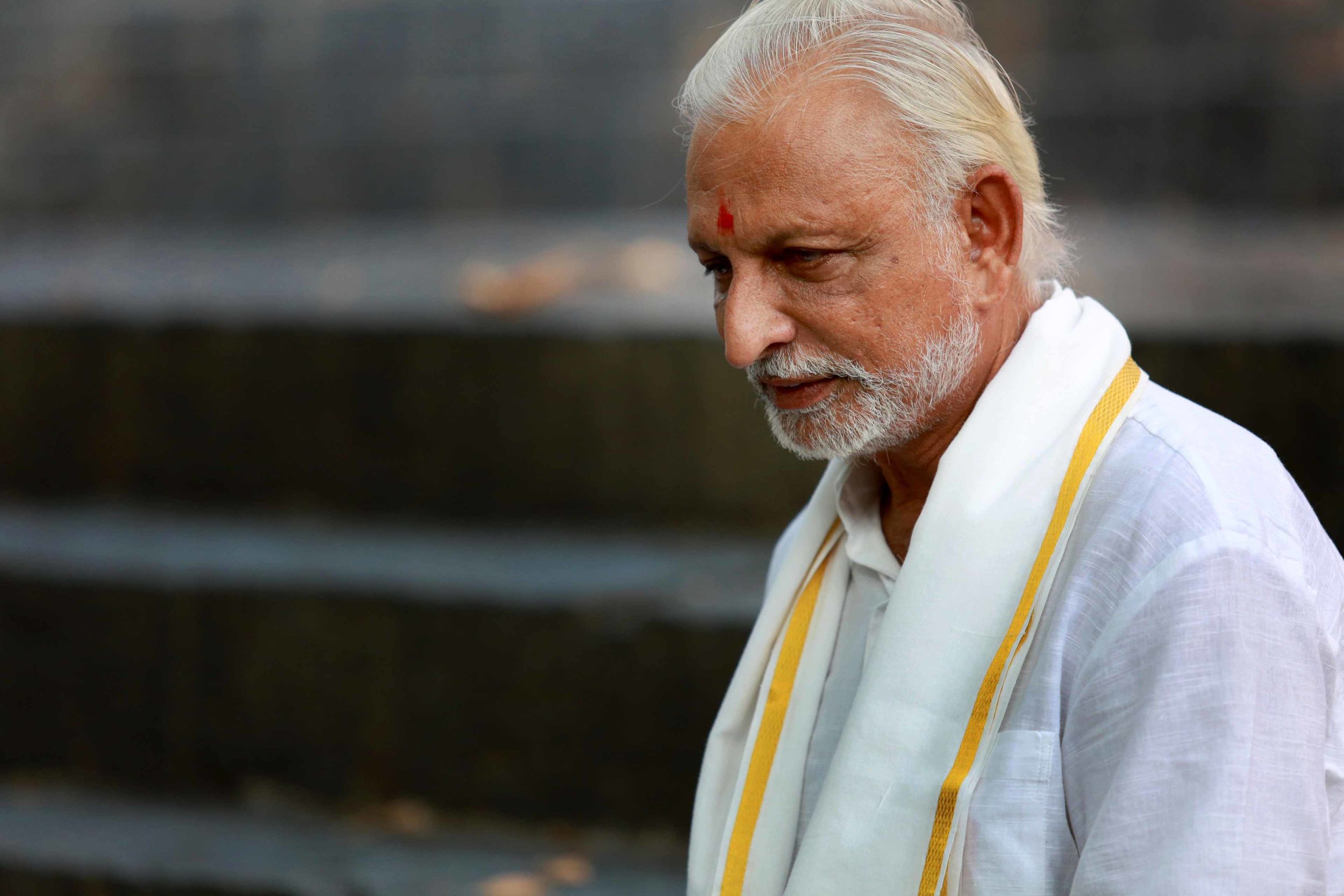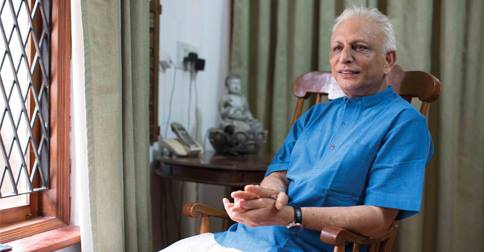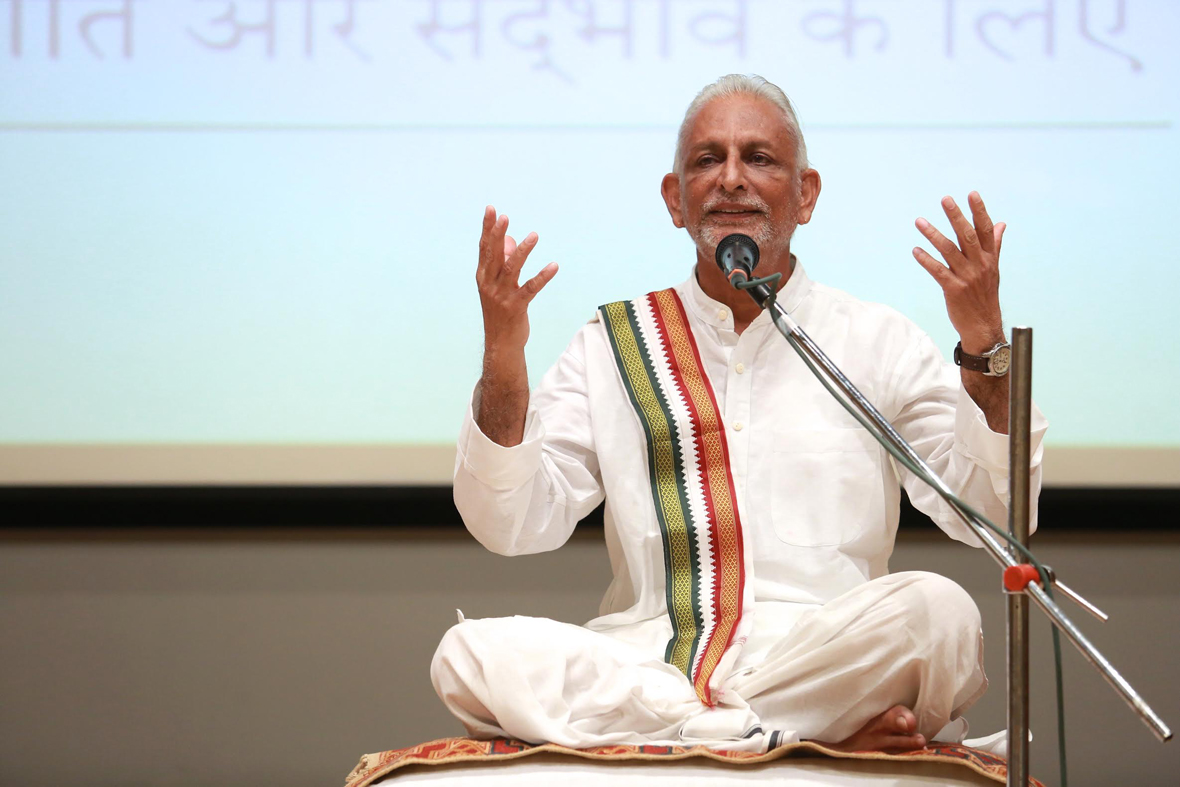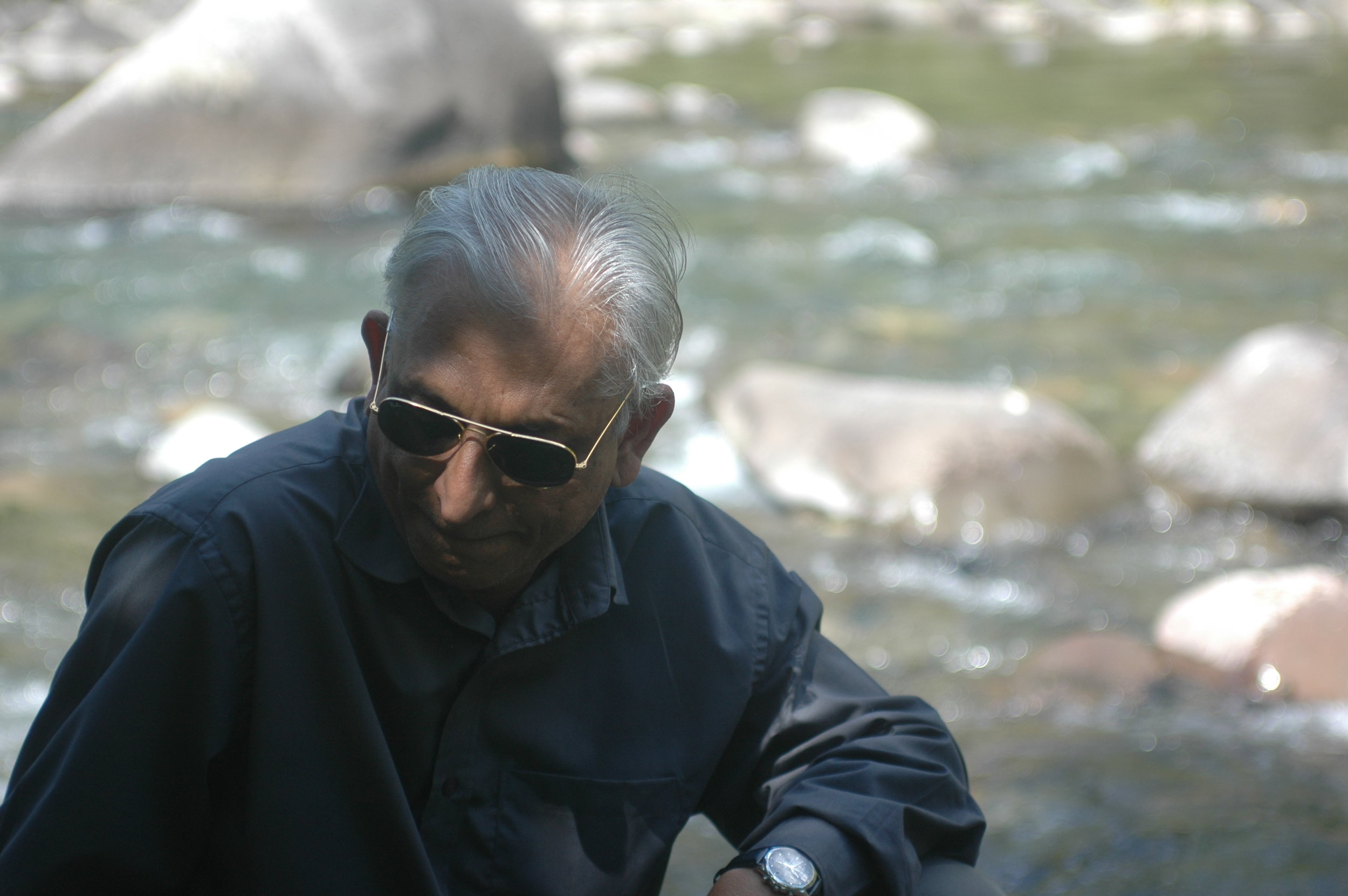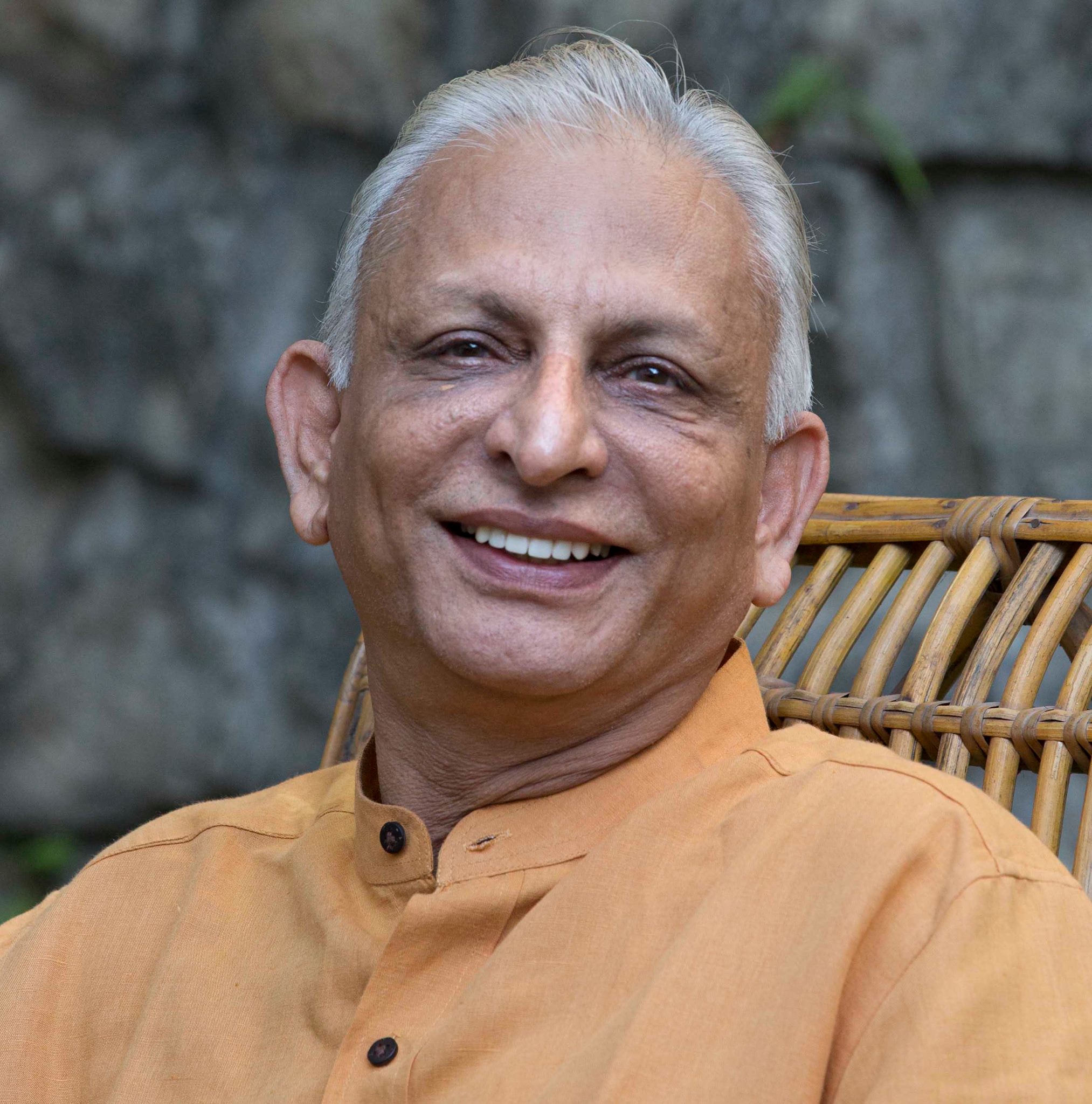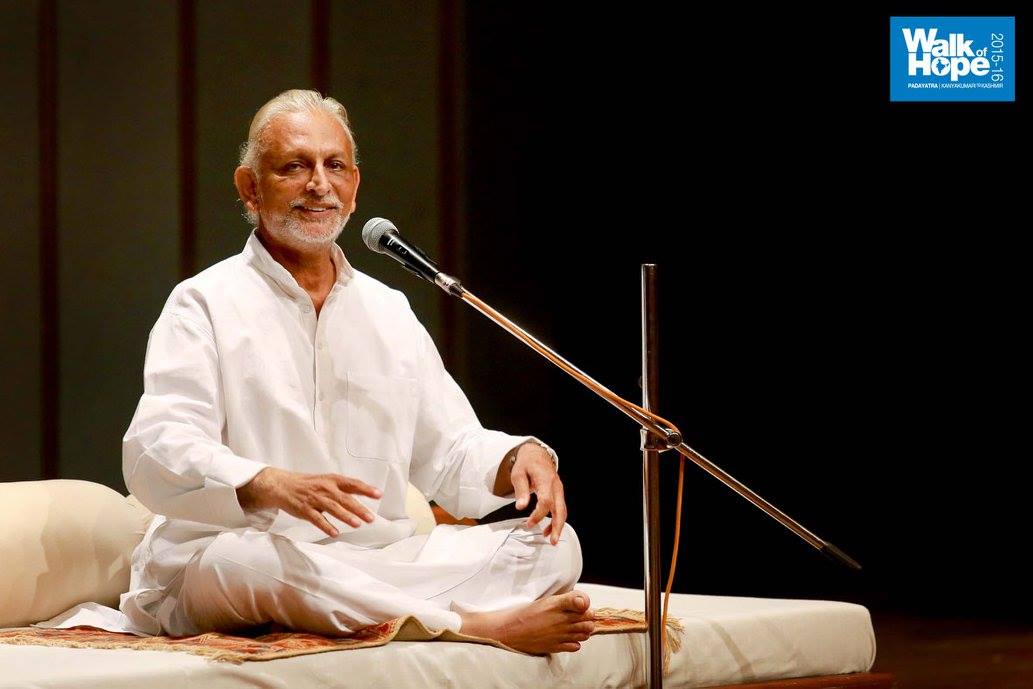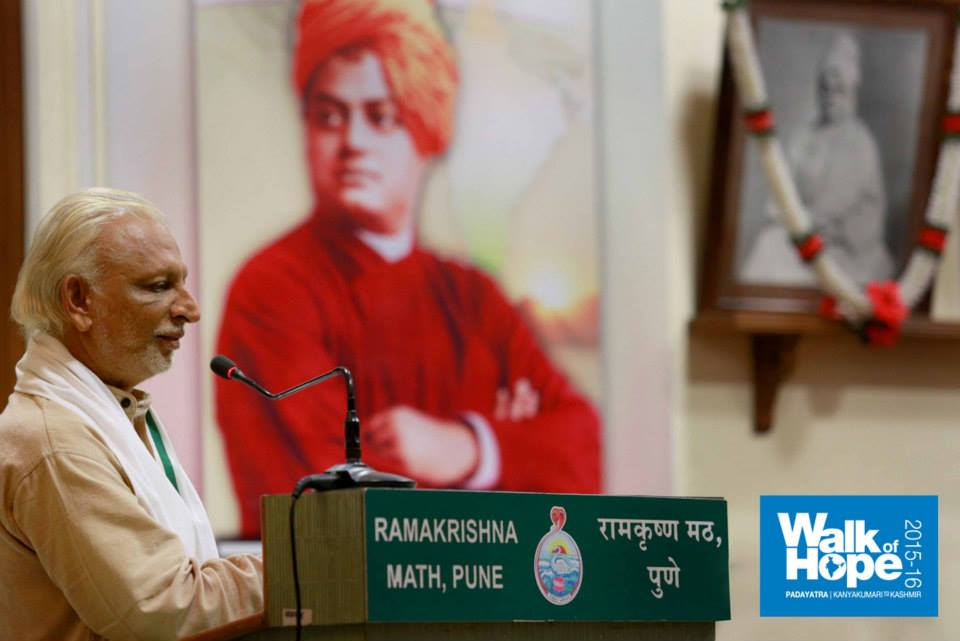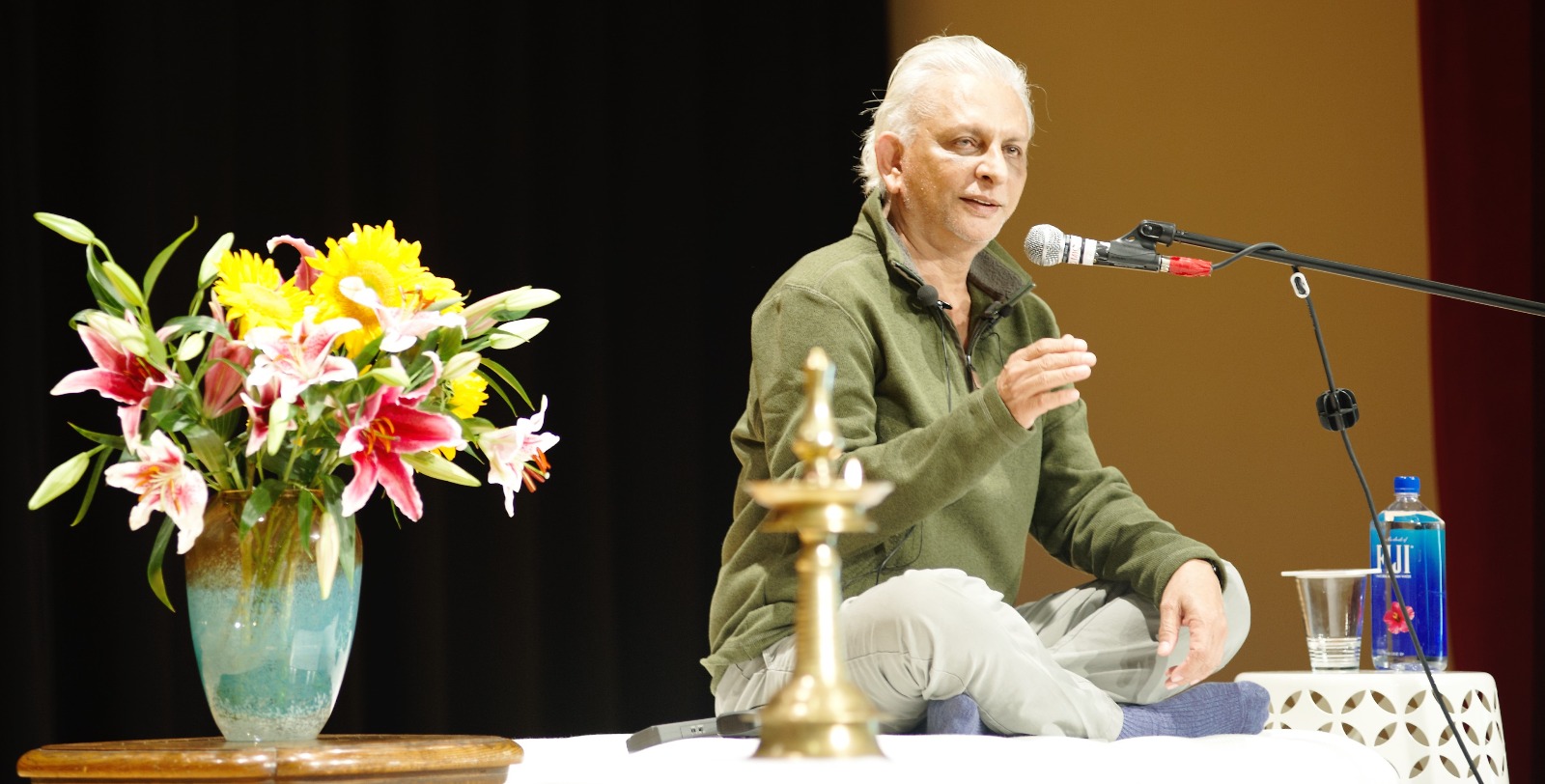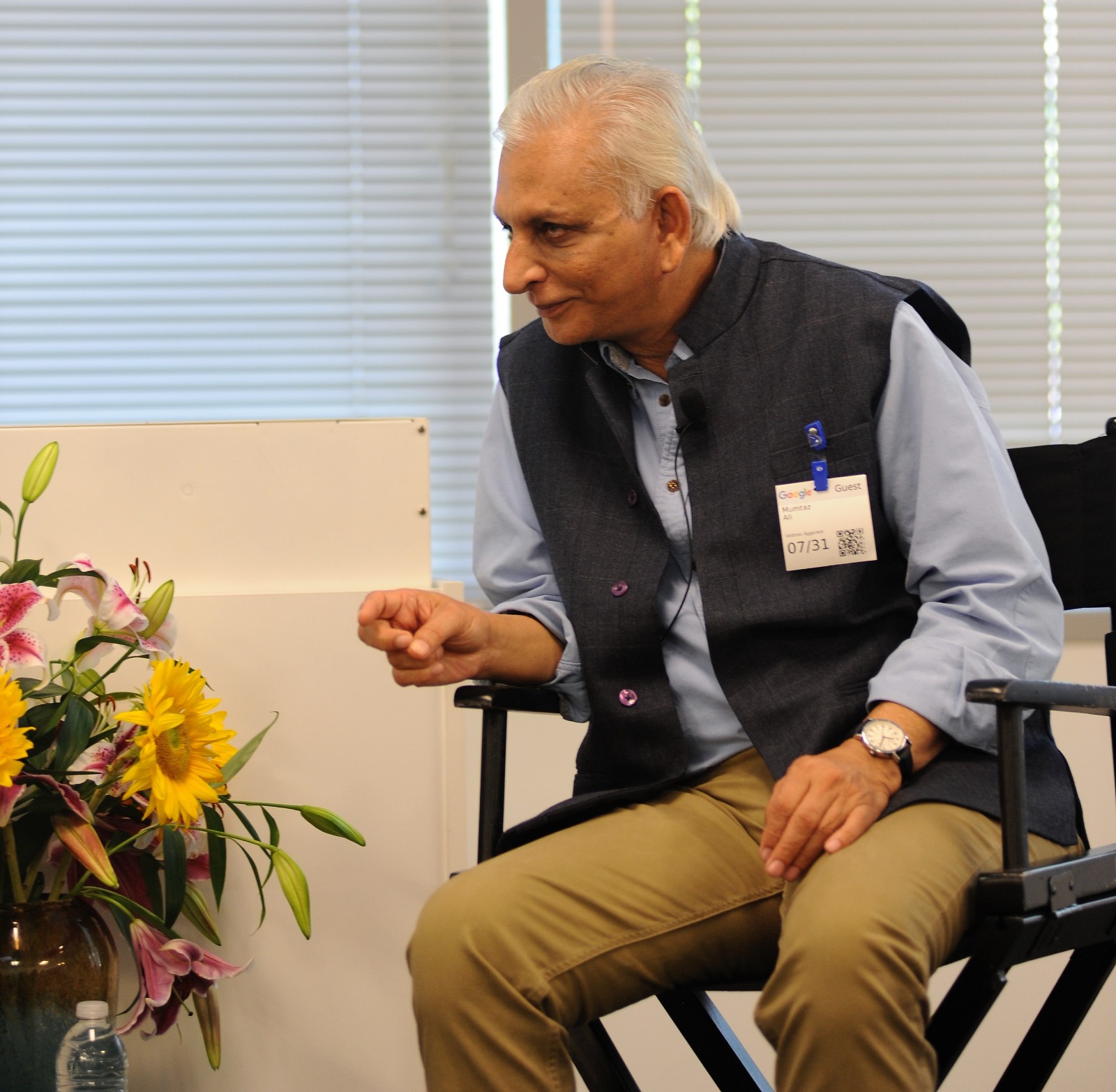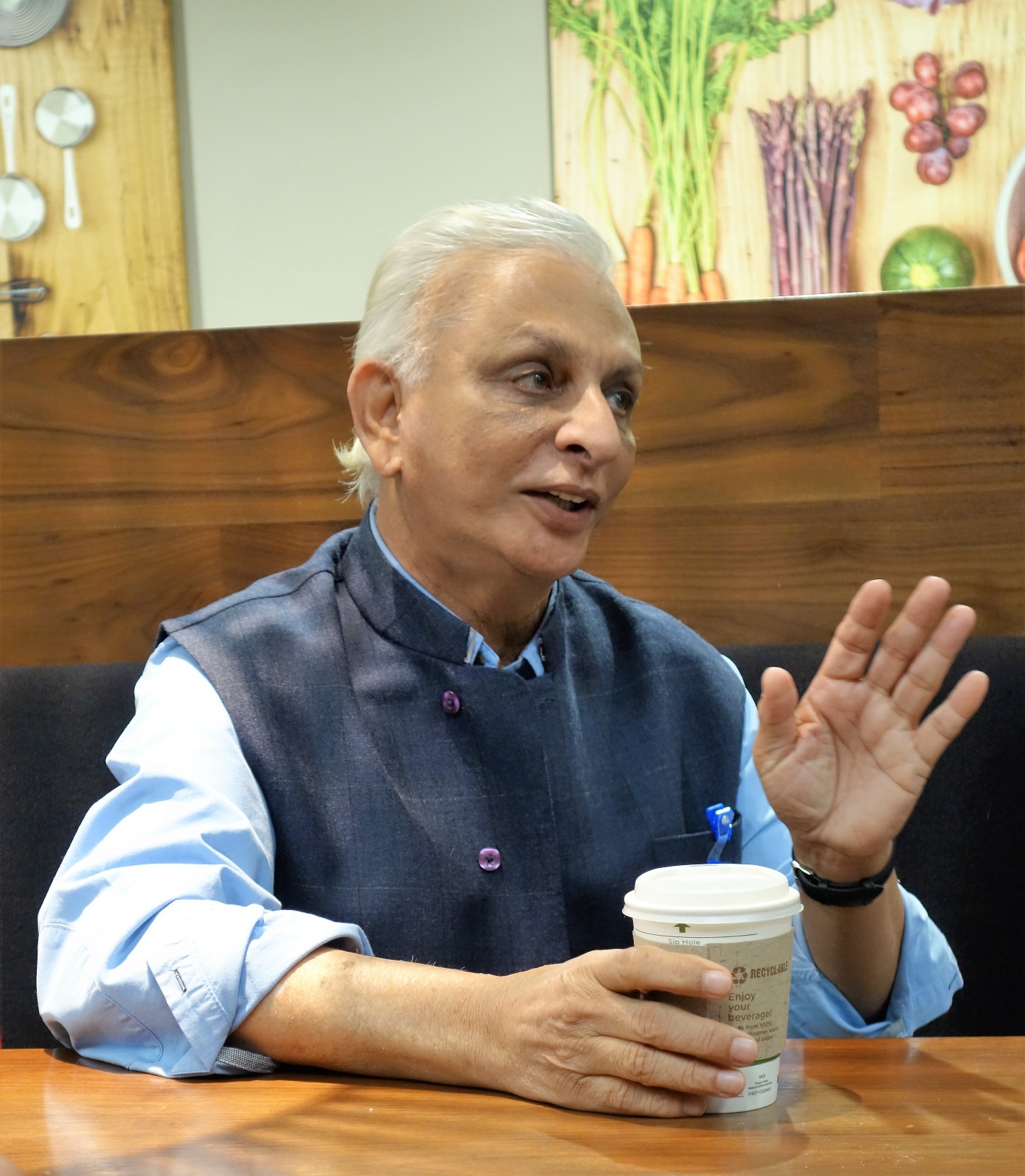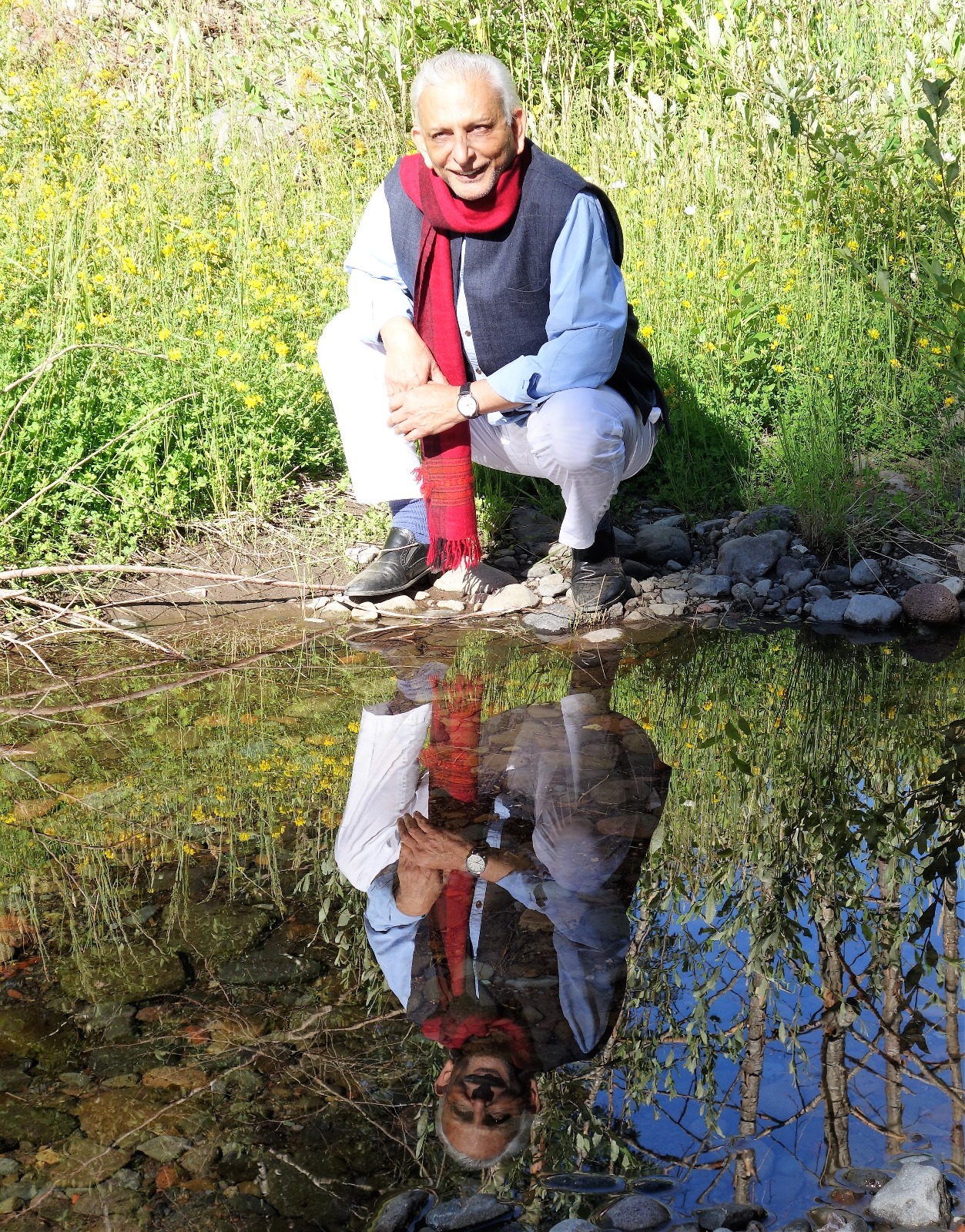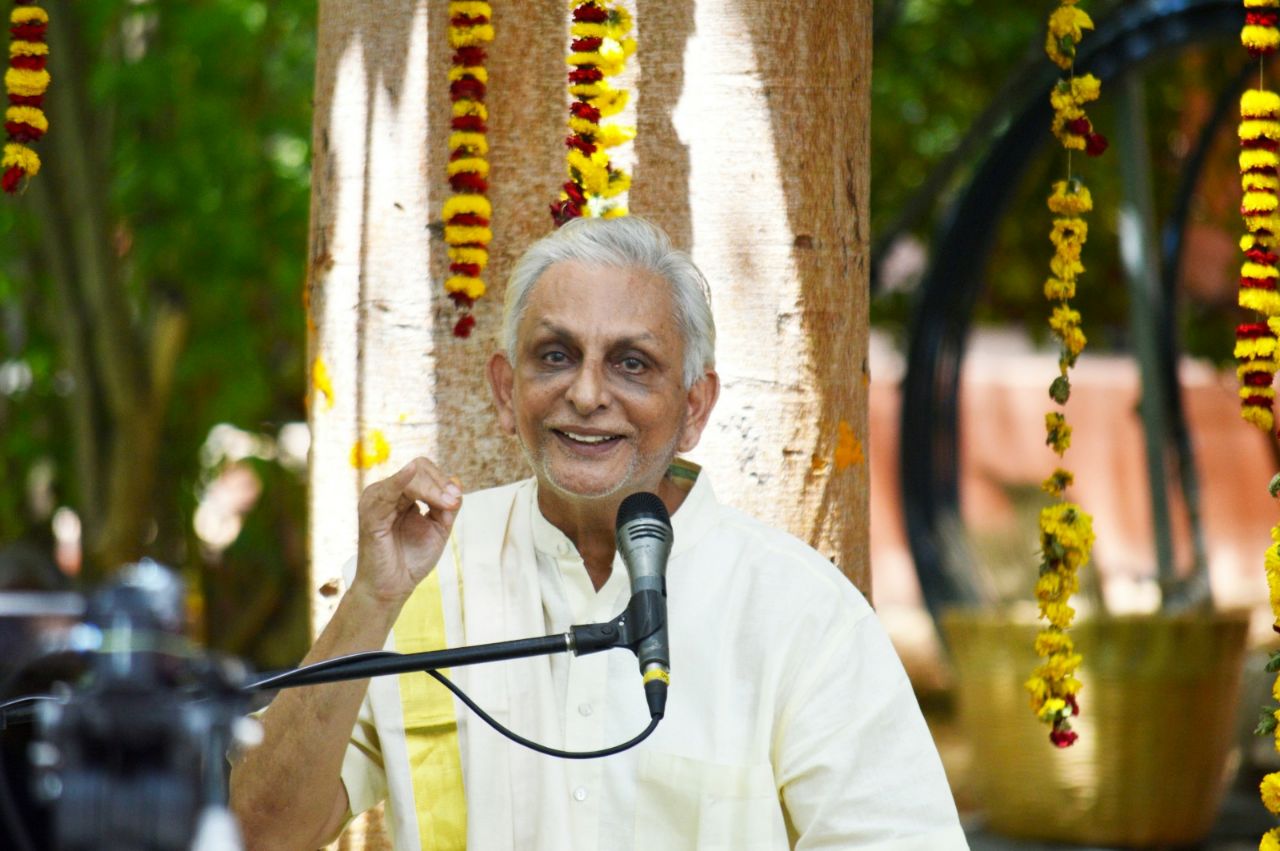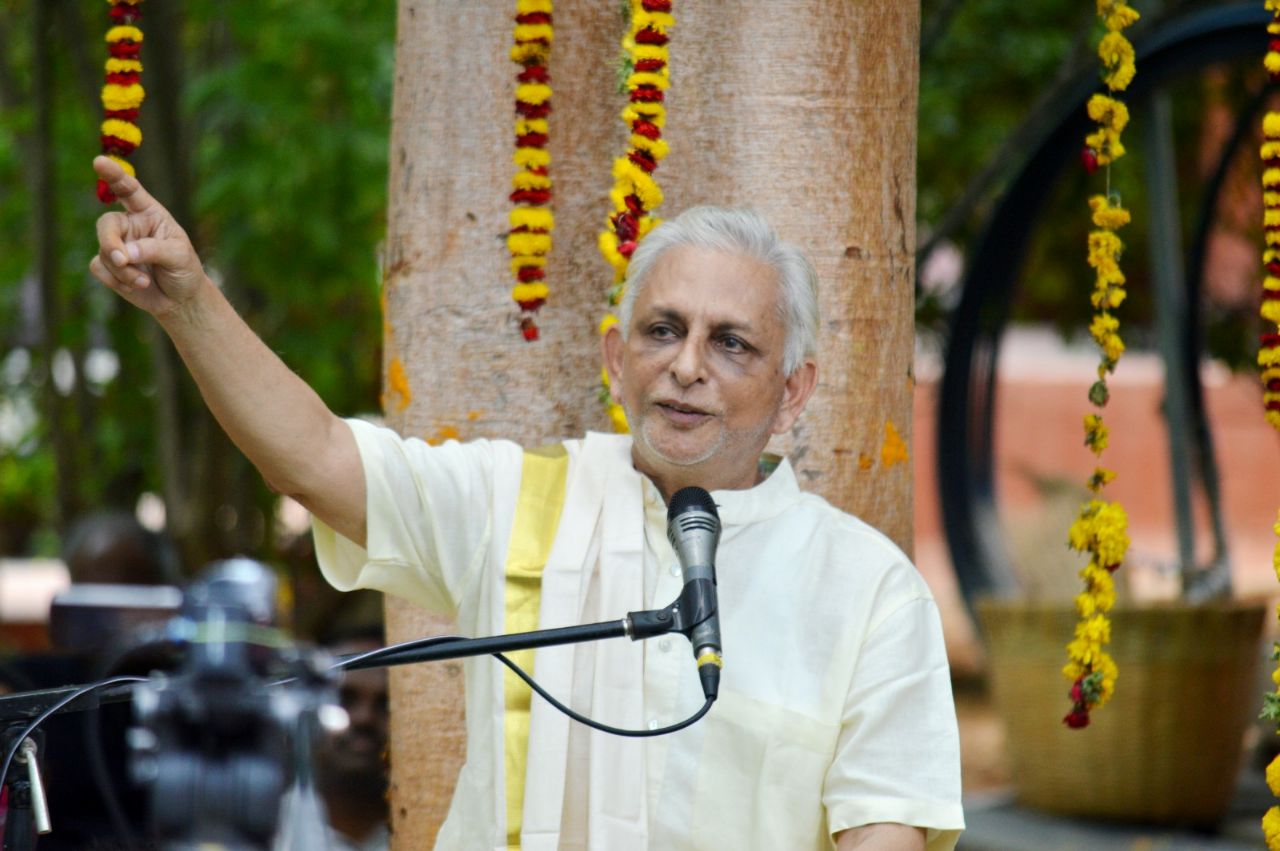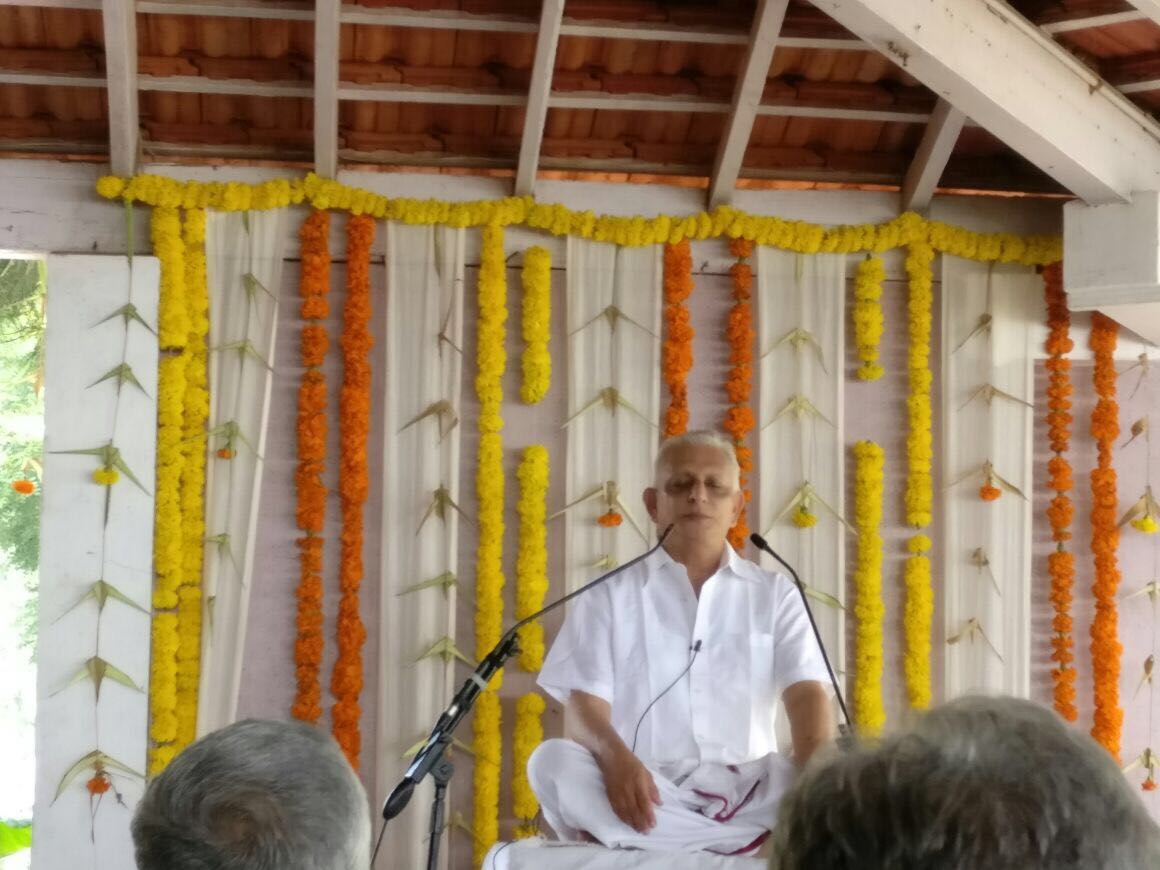Kriya Yoga
Kriya simply means method, practice, technique. Having said that, we should understand that there is no technique to find the Truth. However, you can prepare the ground from where it is possible to take off, perhaps. It is a Sadhana to prepare yourself to open your windows so that when the breeze of grace blows, you have not closed your windows and it comes in.
The aim of Kriya Yoga is to help the aspirant advance towards freedom from the constant fluctuations of a disturbed mind. Regular practice over a period of time aids in peaceful and calm meditation, and ultimately helps to naturally achieve a state of well-being and content, by discovering the source of happiness within ourselves.
Sri M’s Lineage
Sri M was initiated into the practice of Kriya Yoga by his personal Guru Maheshwarnath Babaji, who was from the Nath Sampradaya (Tradition). His Guru was Sri Guru Babaji.
The Naths were yogis par excellence. The asanas, pranayama, kriya yoga, bandhas, and mudras were practiced and perfected by them.All the important works on yoga, like the Goraksha Shataka, the Gheranda Samhita, the Hathayoga Pradipika, and so on were written by Nath yogis.
Purpose of Kriya Yoga
The basic purpose of Kriya is to balance your breath. The breath (shvasa) is closely linked to your life energy (Prana). So Kriya is the method by which the prana is balanced which is usually dissipated through the 108 nadis (channels).
Kriya is a form of rhythmic breathing, by which you can manipulate your breathing and connect it to the energy– Prana, and make it ascend to higher levels of awareness. It is a blissful experience, wherein your mind expands and becomes one pointed to touch That.
If therefore thine eye be single, thy whole body shall be full of light. (Mathew 6.22)
According to yogic anatomy and physiology, the human body or system has innumerable channels through which the energy flows. However, the important channels are the Right, the Left and the Central. The left and the right channels are called ‘Ida’ and ‘Pingala’. The energy flows through them, for any activity on this earth, including studying, learning physical activity, food, eating, sex etc.
However, to go into the interiors of your consciousness, the mind needs to be clear, free of prejudices and pre-conceived ideas and therefore open to receive. Kriya is one way to harness all the energy that is in you, which is usually dissipated and bring it to one point.
You need to gather these energies which are in the Ida and the Pingala, bring them into Mooladhara chakra, make them travel along the Sushumna, from which when the Prana or the energies begin to operate, then your awareness rises from the gross to the subtler and the subtler and finally you touch That, which cannot be understood by the five senses.
For that you need to open up other instruments of perception and some of them are placed in the central channel through which the energy travels, till it reaches the top of the head, which is the Sahasrara, the thousand petalled Lotus. This movement is the practice of Kriya – to channelize the Prana and open up the centers of perception, which takes your awareness to the higher levels, to start with.
Four Basic Rules to practice Kriya
Four Basic Rules are to be followed, in the practice. These are called the Yama and Niyamas.
Practice at least once a day, if you do twice, it is okay, but once a day, surely you have to practice, preferably in the morning.
Try as much as possible to stick to the Truth, in your daily life. Try your best.
Lead a simple life, as much as you can. Don’t base your happiness on your possessions. Moderation is the key.
Try not to cause injury to other beings, include human beings in it, as much as you can.
If you practice daily and your mind becomes quiet, then you begin to tap into that source of energy.
The results of the Kriya are decided by your dedication, your one-pointedness, and your understanding of what you are trying to do and practice, rigorous practice. All these things count.
F.A.Q.s
What is Kriya Yoga?
As Sri M explains, the word ‘Kriya’ means action. The technique of Kriya Yoga, according to Sri M’s ‘parampara’ (tradition) is a combination of yoga asanas (body postures), pranayama (breathing techniques), which may include positive and constructive imagination exercises and the chanting of Pranava and/or other mantras.
Is Kriya Yoga essential for spiritual progress?
“It’s important to note that Kriya Yoga is not a compulsion for spiritual pursuits and this goal can be achieved with or without a formal Kriya Yoga technique.” – Sri M
I belong to a certain religion / I do not believe in religion / or theism so is Kriya Yoga suitable for me?
The techniques taught in Kriya Yoga are universal methods of meditation meant for one and all, regardless of religion, race, order, caste, creed, sect, or nationality. These are meant for all genuine aspirants including householders and ascetics alike and do not require any theistic belief system of the practitioner.
How do I get initiated into Kriya?
All Kriya initiations by Sri M usually take place privately at designated events or retreats amidst groups of interested aspirants.
You can visit the website and sign up for an upcoming Kriya Yoga event/retreat or you can write to us at meetsrim@satsang-foundation.org and we would be happy to facilitate your request at the earliest.
We would wish to inform you, that unfortunately due to the Covid-19 situation at hand, all events currently stand postponed or subject to being rescheduled. We are closely working on updating the schedule the soonest.
How do I learn it?
Sri M says, “Spiritual advancement is a very personal affair, and is not something that can be sold ‘en-masse’”. And with this, he often quotes “A certain method or practise may be suited to some, but may not be recommended for all”. Sri M teaches Kriya Yoga personally in small groups. Kriya initiations by Sri M usually take place at designated events / residential retreats amidst groups of interested aspirants. The official website has regular information on events or retreats where Kriya Yoga is initiated by Sri M. You can sign up for one of the events if you are keen to learn.
Are there any charges to learn Kriya Yoga?
Sri M does not teach Kriya Yoga as a paid course or as a meditation franchise.
A genuine aspirant may only be requested to offer a flower or a coin, which is regarded as a traditional ‘symbolic’ practise of Guru Dakshina representing an aspirant’s offering of sincerity and willingness to learn. However, there may be cost involved for food, accommodation and other expenses in case of a residential program.
Are there any teachers of Kriya Yoga from who I can learn?
Kriya initiation is given only by Sri M. Sri M does not have any appointed teachers.
Anyone claiming to teach or sell Kriya Yoga in the name of Sri M or his Spiritual Tradition (Parampara), is not endorsed by him or the Foundation. As he says “Kriya Yoga or any other genuine spiritual technique is not an item for sale, and it must never be made into one either. There can be no mass franchise in these matters, every aspirant is different and may require a different approach”
Sri M teaches Kriya Yoga in person and does not endorse or authorise the use of any indirect form of communication through mass postal correspondence, or via emails, unsolicited audio-video, or through the use of any other medium (physical / non-physical) in order to impart these techniques.
Is it mandatory to practice Kriya Yoga in order to be able to follow Sri M’s teachings or methods?
Not at all. There can never be a mandate for any real spiritual pursuit. In fact the true goal of Kriya Yoga is to liberate you from all teachers, teachings and techniques.
Is it necessary to get initiated into Kriya Yoga for further spiritual advancement?
No. Sri M often cites the example of the famous Indian poet-saint ‘Meera Bai’, who is said to have attained spiritual awakening by her intense and pure devotion, or Ramana Maharishi, Ramakrishna Paramahamsa and Swami Vivekananda – all of whom did not practice “Kriya Yoga’ in particular.
Are there any practises, techniques or certification levels to pass before I can get to Kriya Yoga?
Just like any new practise, different techniques of Kriya Yoga maybe given to aspirants, depending upon what is best suited at the time. This is not based on any certification process.
In some cases, Sri M may give a certain practise to follow before adopting another. This is very individual and cannot be generalised and is personally communicated to the aspirant.
Please note that Kriya Yoga is taught so that the aspirant can free the mind, and not be caught up in worrying about a ‘course’ or an exam which must be judged, qualified for, graded or certified en-masse.
On this, Sri M often quotes the weaver saint Kabir Das and says ‘Jaise Paat Gire Paruvar Se’ ie. just like the leaf falls from the branch, these processes are meant to be both practical and natural. They are required to be learnt through insight from a genuine teacher and are usually not set in stone.
Are there any prerequisites for an interested aspirant?
As Sri M says “The only prerequisite that I request of an aspirant is to be ‘Truthful’ in all walks of life, and once the method is taken, to practise regularly with ‘Sincerity’. That’s all.”
I am a householder. Once I start, will I need to give up anything?
Kriya Yoga is universal and is meant for one and all. In fact, Sri M’s teacher Maheshwarnath Babaji stated to him that the goal of Kriya Yoga in today’s day and age is to benefit the householders. People must remain where they are and practise towards their spiritual development. There is no need for taking Sanyasa or become a renunciant. Sri Lahiri Mahasaya ji had also stated the same thing, and in fact lived his life as an example.
I am apprehensive of starting Kriya, how can I take it forward?
There must be no force. The inclination to learn must be natural. As Sri M says “These methods are meant to liberate the mind, not to bind.”
Is Sri M’s Kriya Yoga similar to the technique / course as offered by another person / organisation who I know or follow?
Neither Sri M nor does The Satsang Foundation vouch for the similarity or authenticity of any method,‘Kriya’, Meditation, or any technique sold, or taught by anyone from any other ‘spiritual’ or volunteer organisation.
However, the ‘Kriya Yoga’ tradition that Sri M teaches traces back to the same lineage as that of Sri Lahiri Mahasaya, and is more or less the same technique that was popularised by Paramahansa Yogananda. Both are similar and the technique that is taught here may have a few additions or subtractions, often depending upon what suits the individual aspirant.
I have already been Initiated in Kriya Yoga from someone or from a branch of teachers which can be traced back to Sri Lahiri Mahasaya’s tradition. Do I need to take Initiation from Sri M ?
No. As Sri M says “If you have already been initiated into a tradition which can genuinely trace its roots back to Sri Lahiri Mahasaya’s method, then there is no need to take it again, since it will be more or less the same technique coming from the same source.”
I have attended an event/retreat and practised what I have learnt so far. How do I learn the advanced Kriya techniques ?
Sri M answers this by sharing a story of Lahiri Mahasaya ji (An accomplished Spiritual Master and Kriya Yoga teacher from Varanasi, India). This story involved two of Lahiri Mahasaya’s Kriya Yoga disciples. The first disciple was a humble postman, who practised sincerely. The second disciple was one who was convinced that his worth was not being evaluated.
One day, he decided to ask Lahiri Mahasaya why he was not giving him the advanced technique. Why is he still being made to practise the ‘basics’? He confronted Lahiri Mahasaya and demanded that he be taught the advanced technique! Mahasaya remained silent. The disciple waited eagerly for a reply.
After a few contemplative minutes, the postman walked in to hand over the mail. Mahasaya simply inquired, ‘Tell me, haven’t you been practising the ‘basics’ every day since a long time? Do you want the advanced technique now?” The postmaster replied “No sir, I’m so satisfied with my first round of practise of the ‘basics’ that I dare not ask for anything more. I don’t think I’ll be able to take it” On hearing this Mahasaya looked at him keenly and said “Good, you are genuinely ready for the advanced technique”.
As Sri M says this is “Food for Thought”.
I have some doubts and I want to get my Kriya practice reviewed from Sri M. How do I proceed?
Sri M recommends that a review be done after a minimum of 9 months to a year of regular practice. Every Retreat / Event has a ‘Kriya Review session’. You can visit the website and sign up for an upcoming Kriya Yoga event/retreat as and when an announcement is made.
Do I need to learn Yoga to practice Kriya Yoga?
Kriya Yoga practice comprises of a set of simple asanas, pranayama and meditation. You do not need to learn yoga to practice Kriya Yoga. However, if you do practice yoga, it is better to do it before your daily Kriya Yoga practice. Please visit Bharat Yoga Vidya Kendra to know about our upcoming courses and programs.
